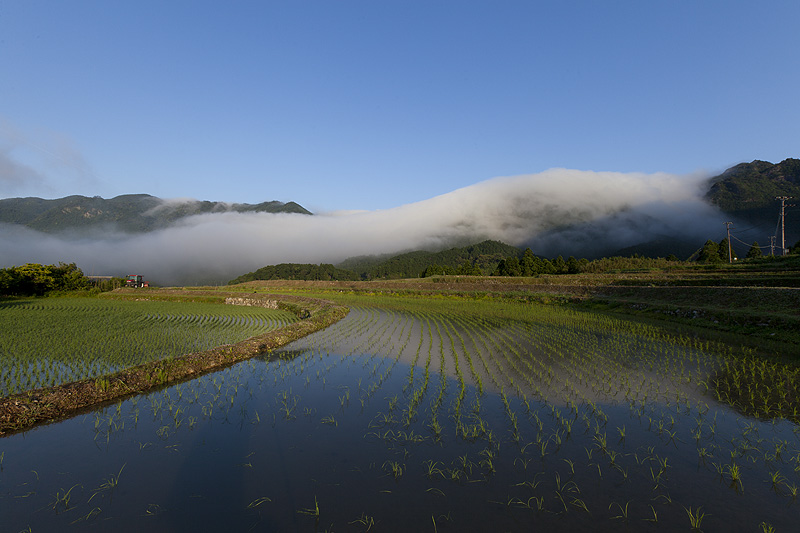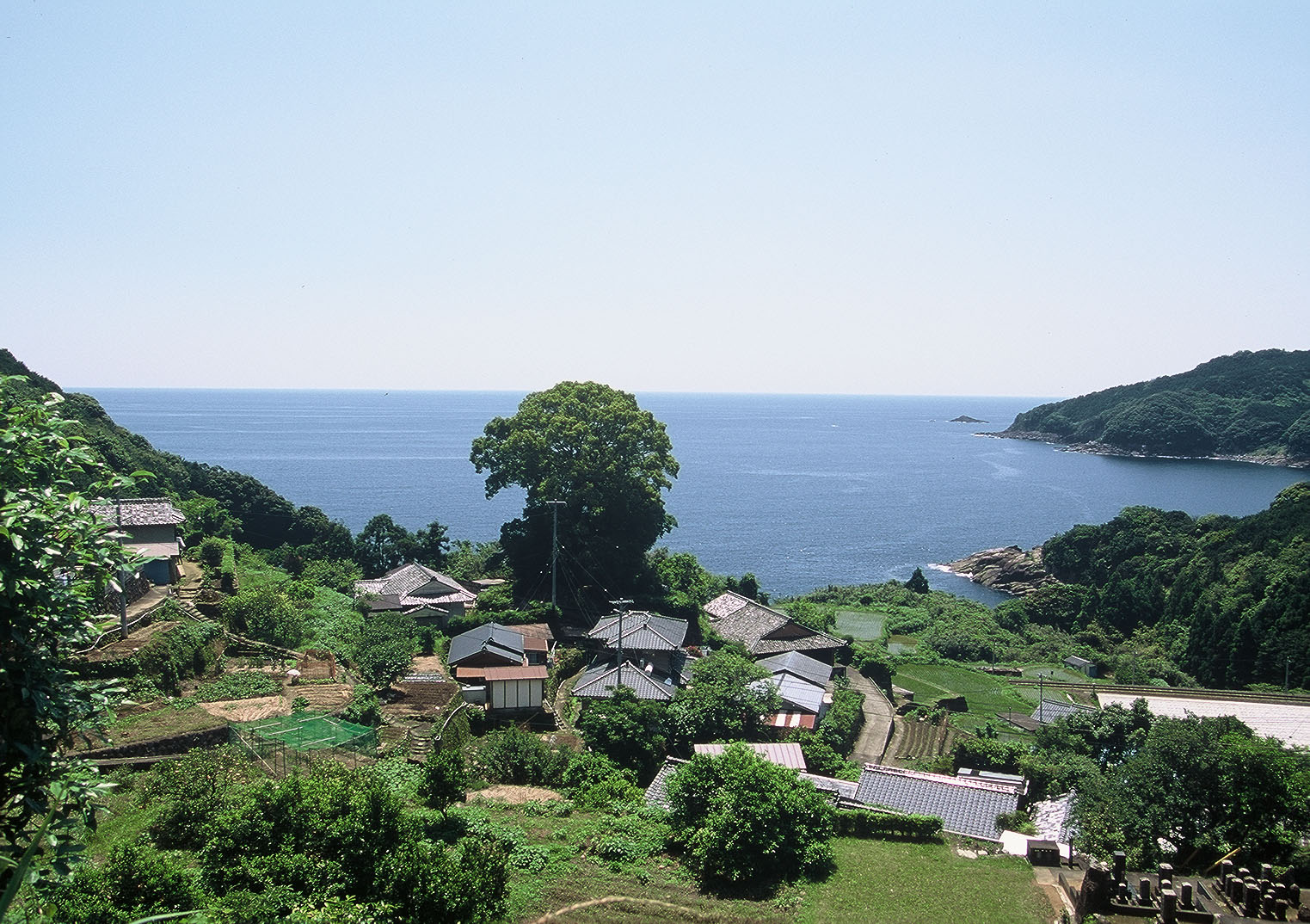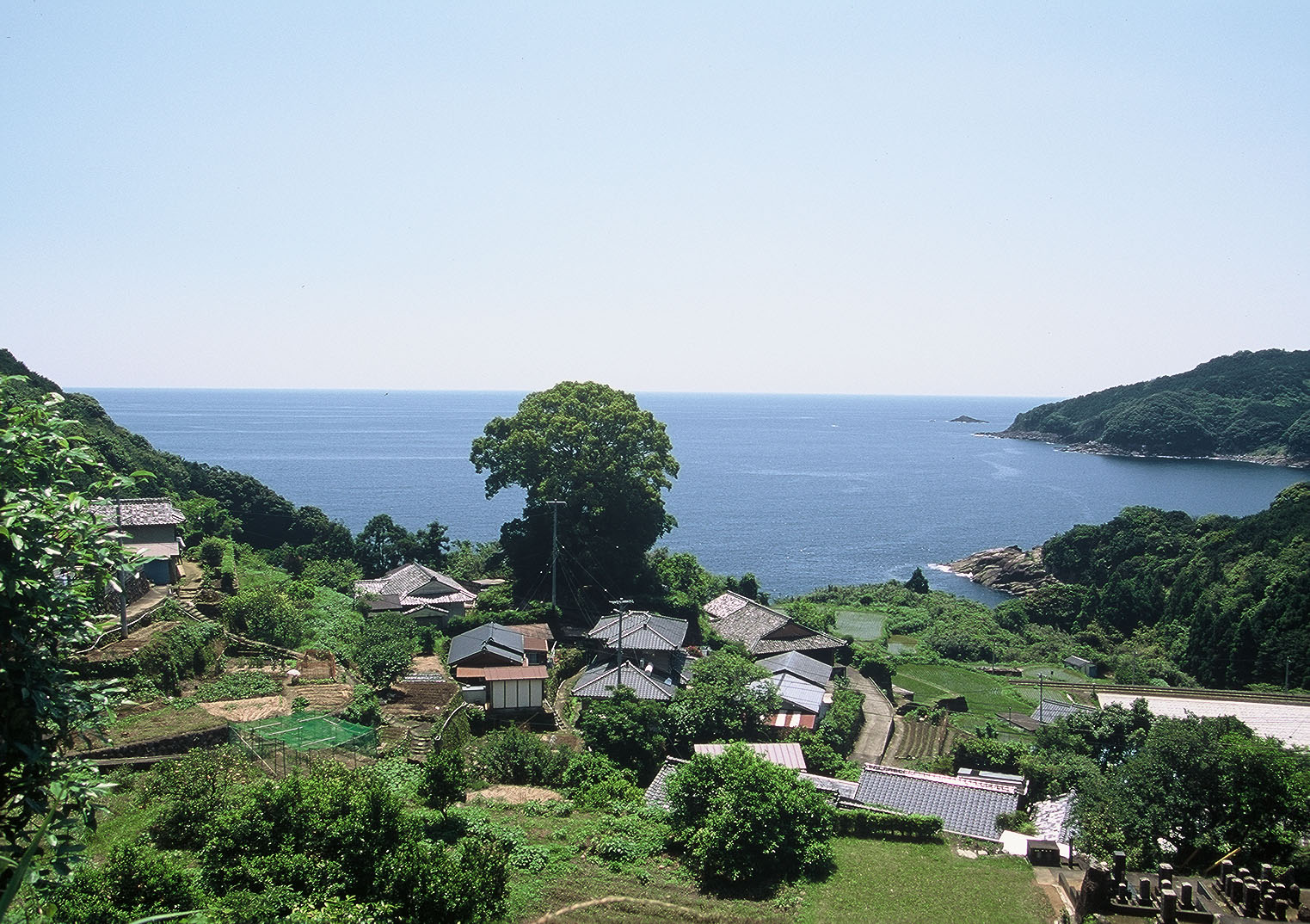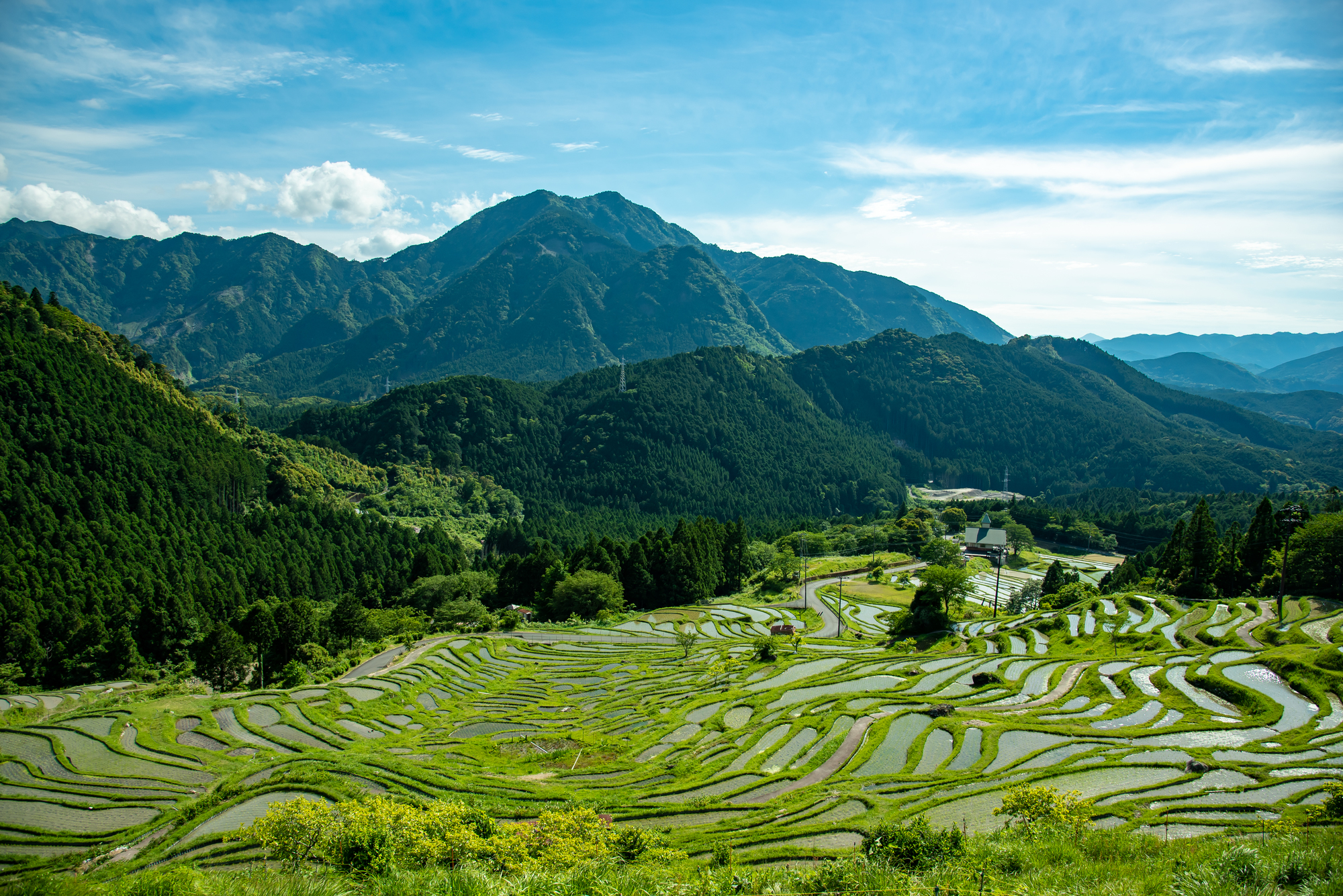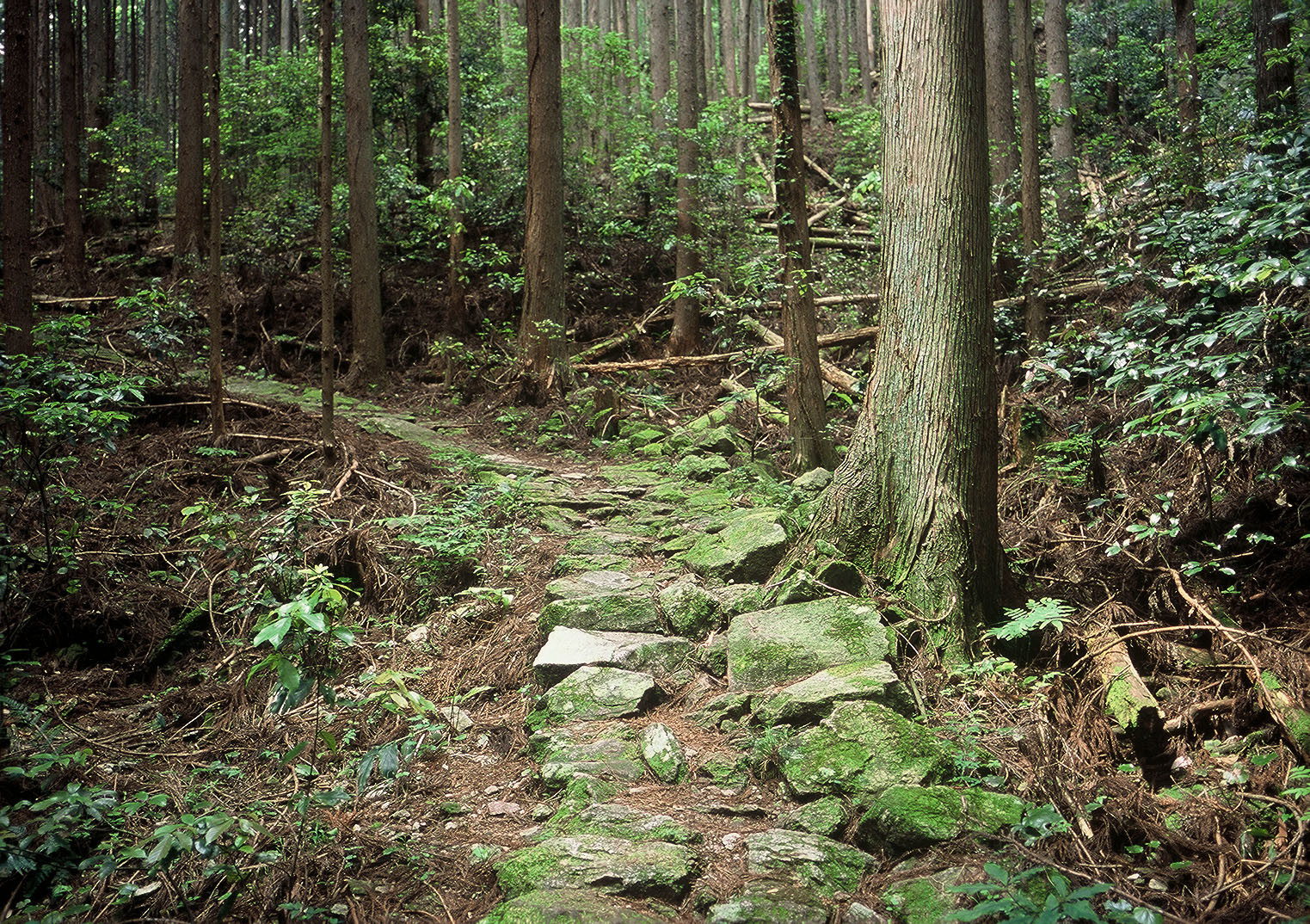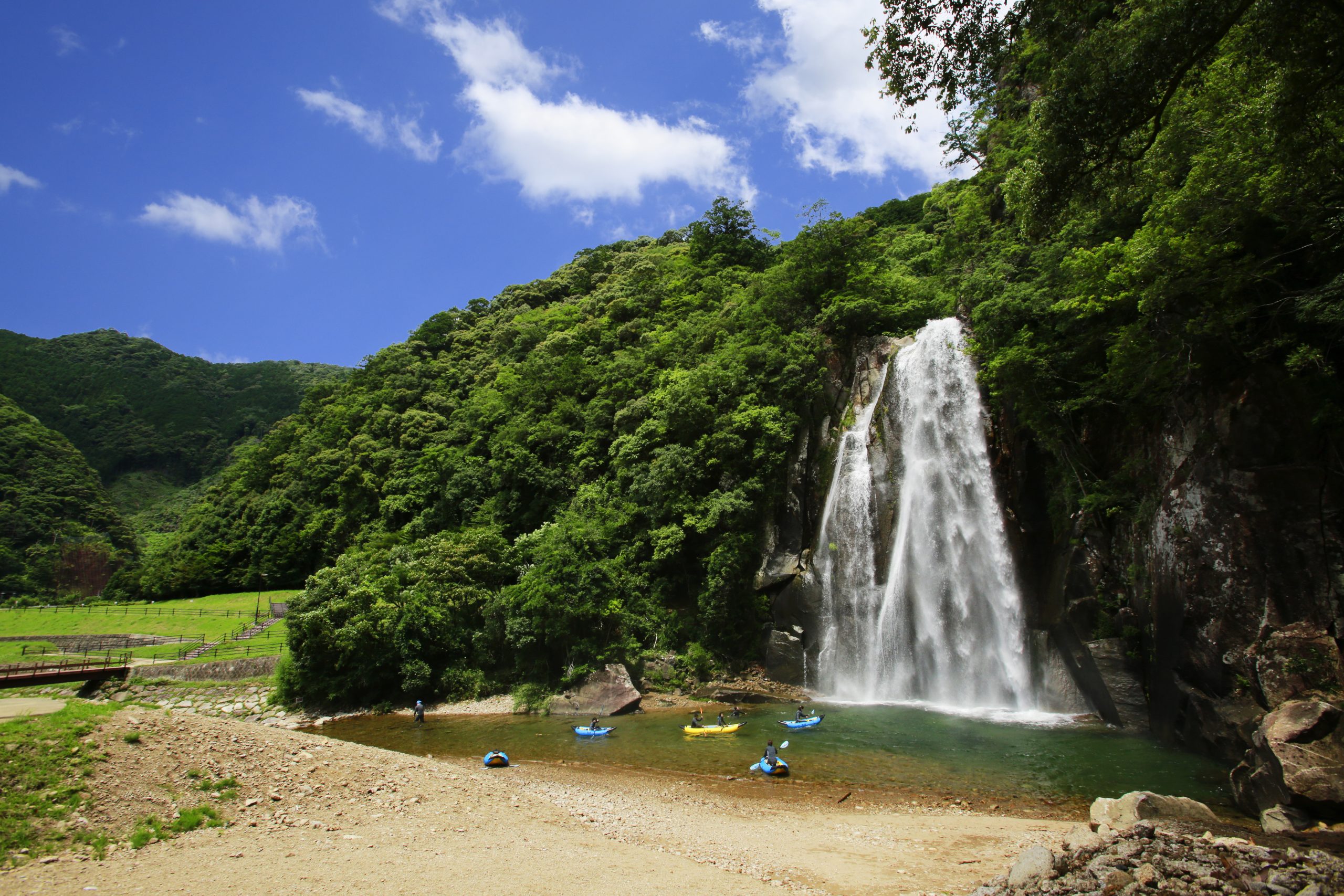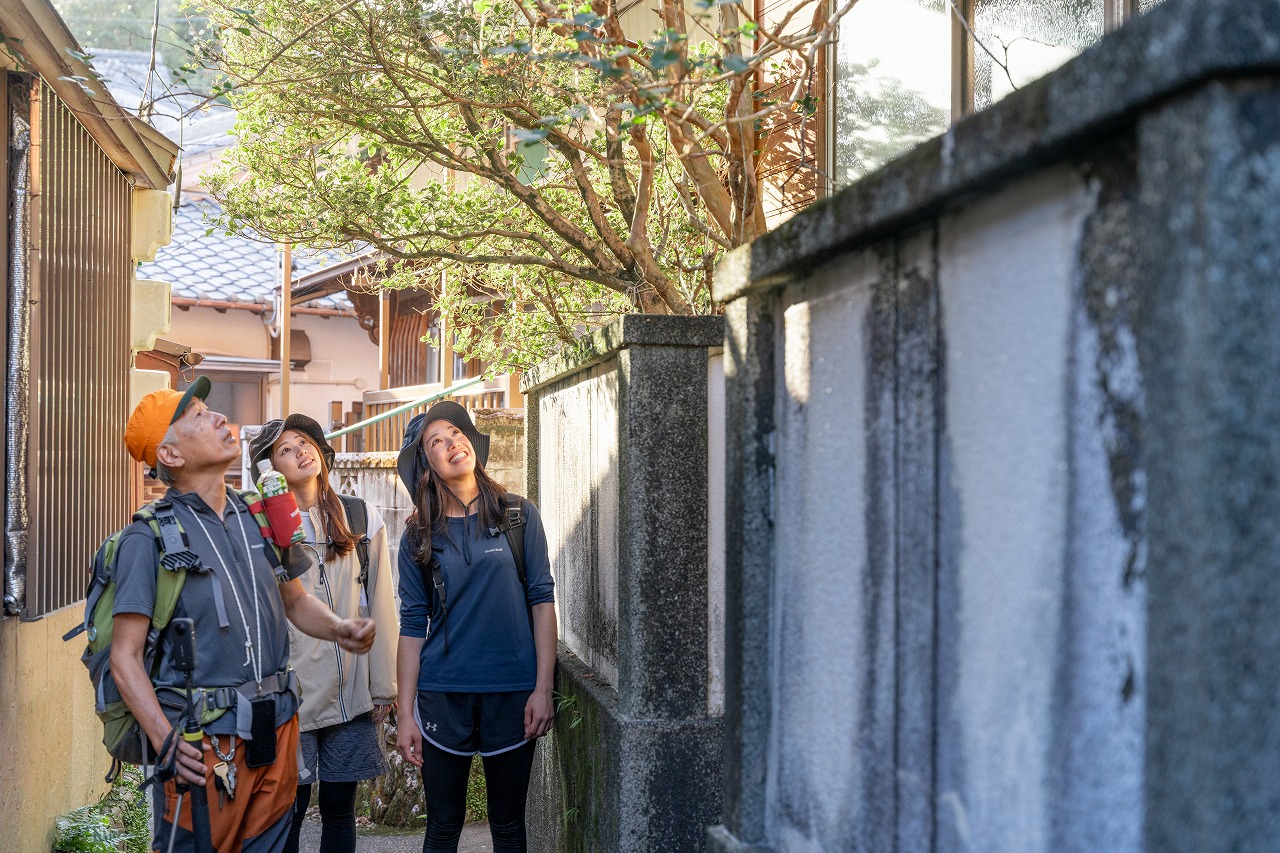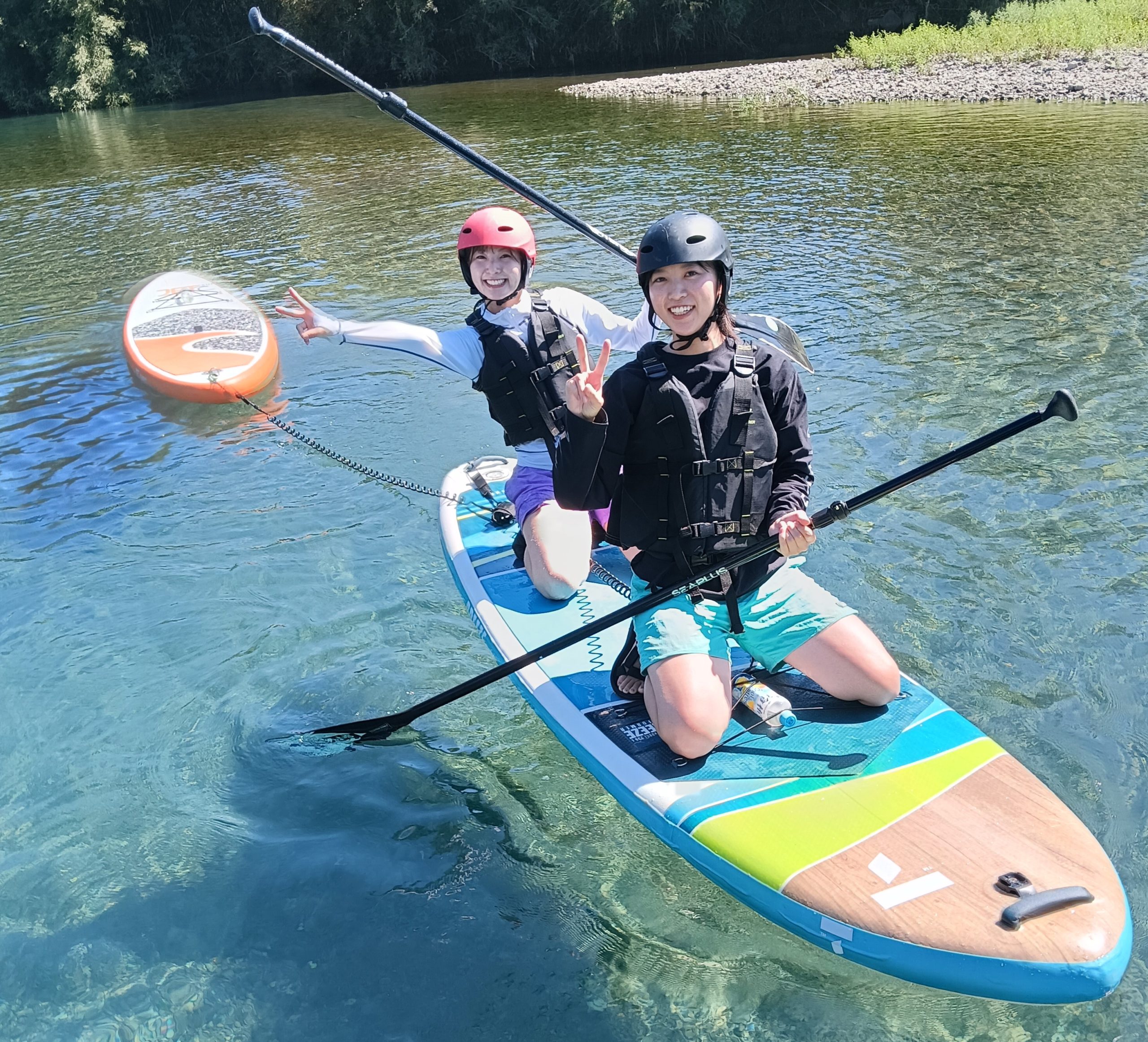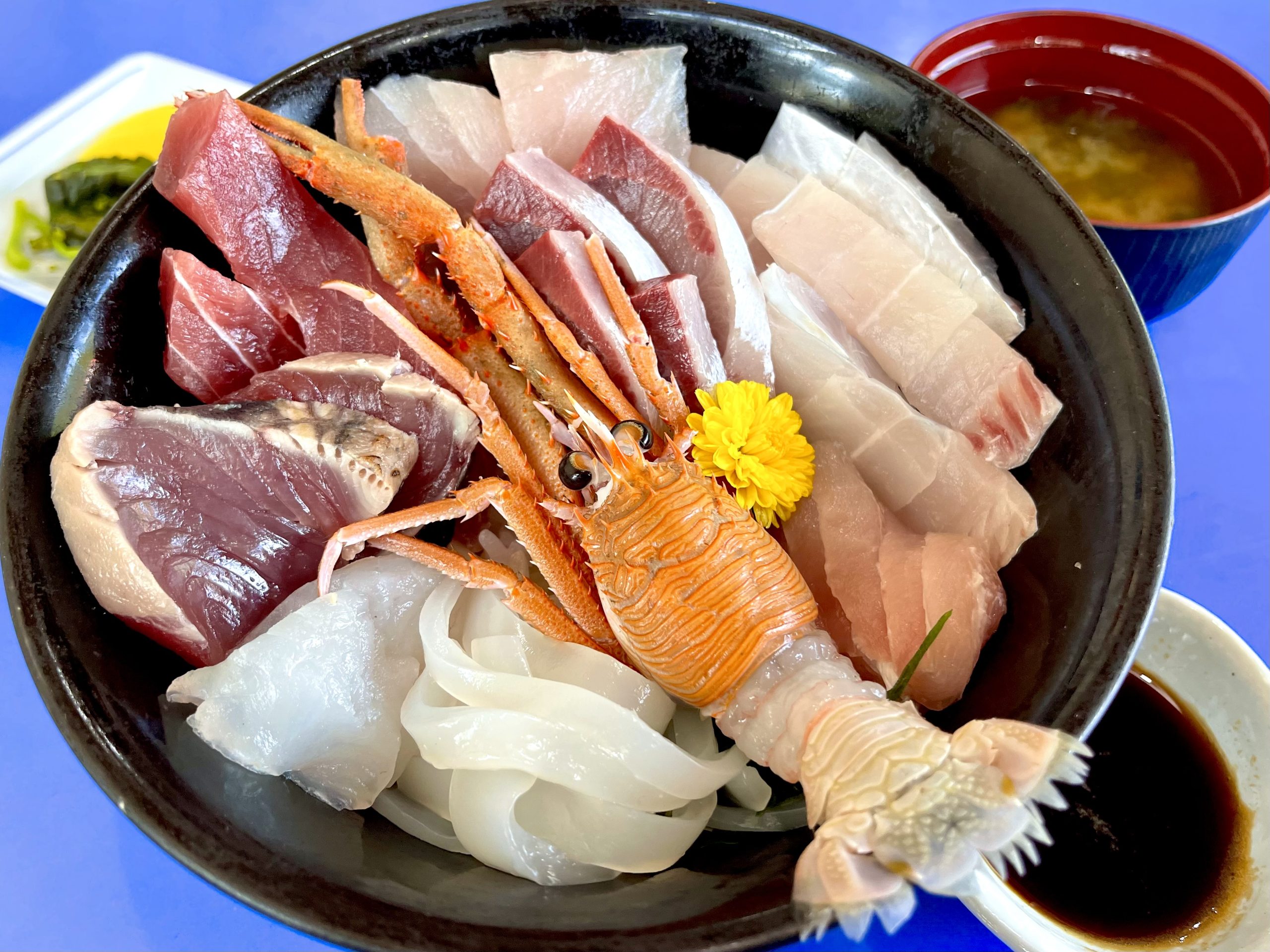The Scenic Splendor Series – Villages
Update:
Owase City
Kumano City
Mihama Town
Kiho Town
A village’s way of life is intertwined with the vast and stunning natural landscape of the sea, mountains, and rivers, as well as its timeless history.
In Higashikishu, one can sense the “essence of Japan” through the abundance of seasonal blessings and the hospitality of its people, nurtured by such an environment.
Explore the landscapes and stories unique to each region by taking a walk along the coast or through the mountains.
You can visit places like Sugari and Asari, which were selected as one of the “100 Villages of Japan,” as well as learn about the local industries such as Maruyama Senmaida and mandarin orange orchards.
You can also experience the cultural traditions of Oroshi and the legends of Hadasu.
In this guide, we introduce six different regions.
▼INDEX
1 Sugari [Owase City] 100 Villages of Japan
2 Hadasu, Jofuku-no-Miya [Kumano City]
3 Maruyama Senmaida [Kumano City] 100 Terraced Rice Fields of Japan
4 Oroshi, Fuden Oroshi (Morning Mist) [Mihama-cho]
5 Mandarin Orange Orchard [Mihama-cho]
6 Asari Village [Kiho-cho] 100 Villages of Japan Hisetsu-no-taki Falls
1 Sugari [Owase City] 100 Villages of Japan

Nestled on a peninsula protruding into the sea and hemmed in by verdant mountains and a complex, deep sea, lies a picturesque fishing village.
From a vantage point on high ground, one can witness the awe-inspiring view of nearly 200 old-fashioned homes with tiled roofs, clinging densely to the land from the sea up to the mountains, evoking the charm of a traditional fishing village.
With its plentiful natural blessings and breathtaking vistas, this charming fishing community has become a coveted destination for filmmakers and TV producers.
In fact, it was even honored as one of the “100 Villages of Japan” in Heisei Year 21 (2009).
During the Edo period, this port served as a waiting area for ships that plied the route between Osaka and Edo (modern-day Tokyo).
Back then, the surrounding waters teemed with migratory tuna and bonito, but nowadays, the cultivation of Ise spiny lobsters and sea bream is the main industry in the area.
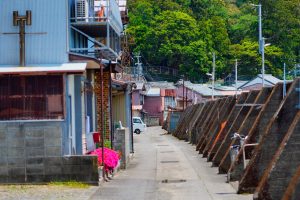
Sukari is an exclave of Owase City.
Prior to the opening of a prefectural road in Showa Year 57 (1982), it was known as an “isolated island” that could only be accessed by cruising boats departing from downtown Owase.
Even though the cruising boats, which had been a vital means of transportation for local residents for almost a century, were discontinued in Heisei 24 (2012), more people have started visiting Sukari by car nowadays, strengthening the bond with the neighboring Kihoku Town.
2 Hadasu, Jofuku-no-Miya [Kumano City]
-300x212.jpg)
Commissioned by the first Emperor of Qin to find the elixir of immortality, Jofuku embarked on a journey.
There were 20 over sites that were alleged to be the legendary site of Jofuku’s arrival from 2,000 years ago, but Hadasu in Kumano is considered to be the most likely location.
Hadasu, also known as Hatasu in the past, still bears many traces of Jofuku’s visit.
According to legend, Jofuku, who had decided to stay permanently in Japan, spread Chinese civilization in fields such as civil engineering, agriculture, whaling, and medicine.
He is also said to have established kilns and taught pottery-making, as evidenced by the place names “Kamajyo” and “Kiln Yashiki” still present in Hadasu.
Jofuku was worshiped as a deity and has been enshrined in Jofuku-no-Miya.
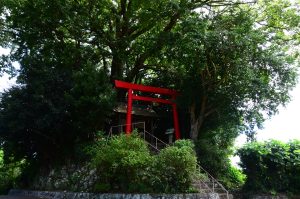
Ashitaba and Tendaiuyaku trees, which are believed to be the elixir of immortality that Jofuku was seeking, grow abundantly in the region.
During the restoration of the path to Jofuku Palace, several ancient coins were unearthed.
These coins were identified by Chinese scholars as Banryu-sen, coins from the Qin Dynasty.
The discovery of Banryu-sen is considered to be very rare and valuable in Japan.

The cobblestone paving along the Kumano Kodo in Hadasu is the oldest among the Iseji routes, dating back to the Kamakura period.
These stones are weighty and robust, distinctly different from the Edo period cobblestones.
Immerse yourself in the picturesque and romantic historic culture of the village that boasts a breathtaking view of the sea.
3 Maruyama Senmaida [Kumano City] 100 Terraced Rice Fields of Japan
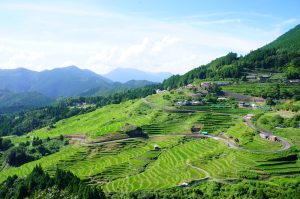
The Maruyama district in Kiwa-cho, Kumano City is home to the Maruyama Senmaida, a cluster of rice fields on the slope of the mountain.
These small paddies number around 1,340, overlapping each other so much that it’s said, “If you think one is missing, it’s hiding under the straw hat.”
During spring, the setting sun and full moon are reflected in the water-filled paddies, while in summer, green rice plants fill the paddies.
In autumn, the rich harvest of golden rice stalks glows in the sunlight. The terraced rice fields also have a beautiful snowy landscape in winter, making it a picturesque spot to visit throughout the year.
Considered the finest terraced rice field landscape in Japan, it has been designated as one of the ”100 Terraced Rice Fields of Japan.”
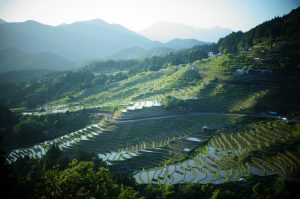
While the exact date of the creation of the terraced rice fields is uncertain, historical records indicate that there were already 2,240 paddies by the Keicho Year 6 (1601).
However, due to a shortage of successors and other factors, the number dwindled to 530 in the early Heisei period.
Local residents recognized the importance of preserving their cultural heritage and in Heisei Year 5 (1993), formed the Maruyama Senmaida Preservation Society with the aim of restoring and safeguarding the fields for future generations.
After the enactment of the “Maruyama Senmaida Ordinance” the following year, restoration work began on the rice fields.
Over 100 households have registered for the Maruyama Senmaida Ownership System, which involves using the paddies, and rice planting experiences are offered year-round.
This system not only contributes to the preservation of the paddies but also provides urban residents with an opportunity to interact with the local community.
For a sweeping view of the Maruyama Senmaida, head to the observation platform located alongside Prefectural Route 40.
There is a parking lot available, allowing visitors to leisurely take photographs.
For those with the physical ability to hike, we suggest making your way to the observation platform situated on Tori-toge Pass, which is a part of the Kumano Kodo.
4 Oroshi, Fuden Oroshi (Morning Mist) [Mihama-cho]
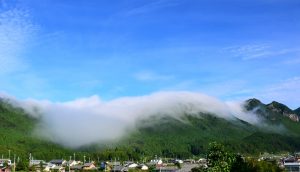
The Oroshi district in Mihama-cho is renowned for its delicious rice and is known for the phenomenon of Fuden Oroshi during autumn and winter.
This is when morning mist descends from the mountainside on days with significant temperature differences.
The fog that forms at night in the Kumano City Kiwa-cho basin is carried by the wind over the Kumano Kodo and Fuden-toge Pass, flowing down to the village.
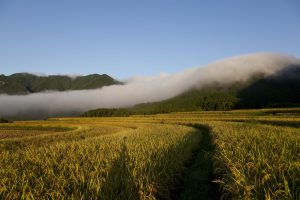
Many visitors come early in the morning to capture the enchanting scenery with their cameras.
The Fuden-toge Pass, located at an altitude of about 250 meters, is named after its ability to transmit winds.
The pass is situated lower than the surrounding mountains, which have elevations ranging from 500 to 800 meters, and the ridges serve as pathways for the wind.
The phenomenon of morning mist is known to be a sign of clear weather to come, but it can also be seen as one of the indicators of fine weather during the day.
5 Mandarin Orange Orchard [Mihama-cho]
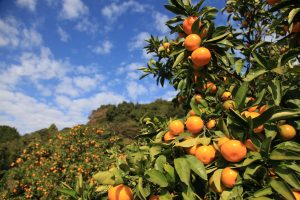
Mihama-cho is known for its slogan “a town where you can harvest mandarins all year round,” and has a rich history of cultivating mandarin oranges.
Records show that in Horeki Year 6 (1756), a senior vassal of the Kishu Domain who served as a lord of the Shingu Mizuno clan encouraged the cultivation of mandarins.
During the Meiji period, as mandarin cultivation became more popular, the previously existing mulberry fields were converted into mandarin orchards.
After World War II, the production of early-ripening Unshu Mandarins became the main focus of the industry, resulting in an increase in shipping volume to regions mainly within the prefecture and the Chukyo area.
-300x225.jpg)
Furthermore, the discovery of the “Sakikubo Early-Ripening” variety in the Showa 40s (1965-1974) established the position of the region as a producer of early-harvested mandarins.
There was also a rising demand for increased production, leading to the implementation of the National Land Development Project in the 1975 fiscal year.
This project involved developing farmland for mid to late-season citrus fruits such as Amanatsu, Iyokan, and Seminole, in addition to Unshu Mandarins.
As a result, the region became a production area for citrus fruits throughout the year.
In addition, the region benefits from a typical maritime climate that is warm and rainy, with an average annual temperature of about 17℃ and an annual precipitation of over 3000mm.
This climate is fully utilized, allowing for year-round cultivation of mandarins.
6 Asari Village [Kiho-cho] 100 Villages of Japan Hisetsu-no-taki Falls
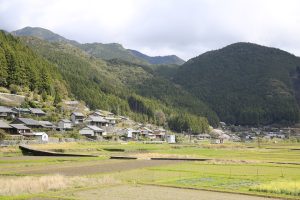
The Asari region was historically reliant on rivers as a means of sustenance.
Riverboats were the primary mode of transportation in the mountainous areas, with people from Asari reportedly using them to travel to and from the Wakayama prefecture side via the Kumano-gawa River.
Around 50 households have built stone walls and settled together on the slopes of the mountain.
When the forestry industry was flourishing, there were lodgings for rafters who transported lumber downstream from the Totsu-gawa River and Kitayama regions to the Shingu market.
However, these lodgings are now deserted.
This tranquil village, nestled in nature, was selected as one of the “100 Villages of Japan” in Heisei Year 21 (2009).

“Hisetsu Falls Campsite,” which was renovated in April of Heisei Year 30 (2018), is now bustling with activity.
This campsite provides an opportunity to experience the “Hisetsu-no-taki Falls,” with a drop of up to 30 meters, up close.
The spacious basin of the waterfall is a perfect location for river activities in the summer. The falls’ name is derived from a kanshi (Japanese poetry written in Chinese) written by the first lord of the Kishu Domain, Yorinobu Tokugawa, who was impressed by its beauty and composed a verse that likened it to snowflakes flying in the air.
There is a walking trail upstream of the falls, where you can take a leisurely walk through the lush green forest.
You can unwind and relax amidst the traditional Satoyama (a place where nature and people exist in harmony) scenery enveloped by fields.

